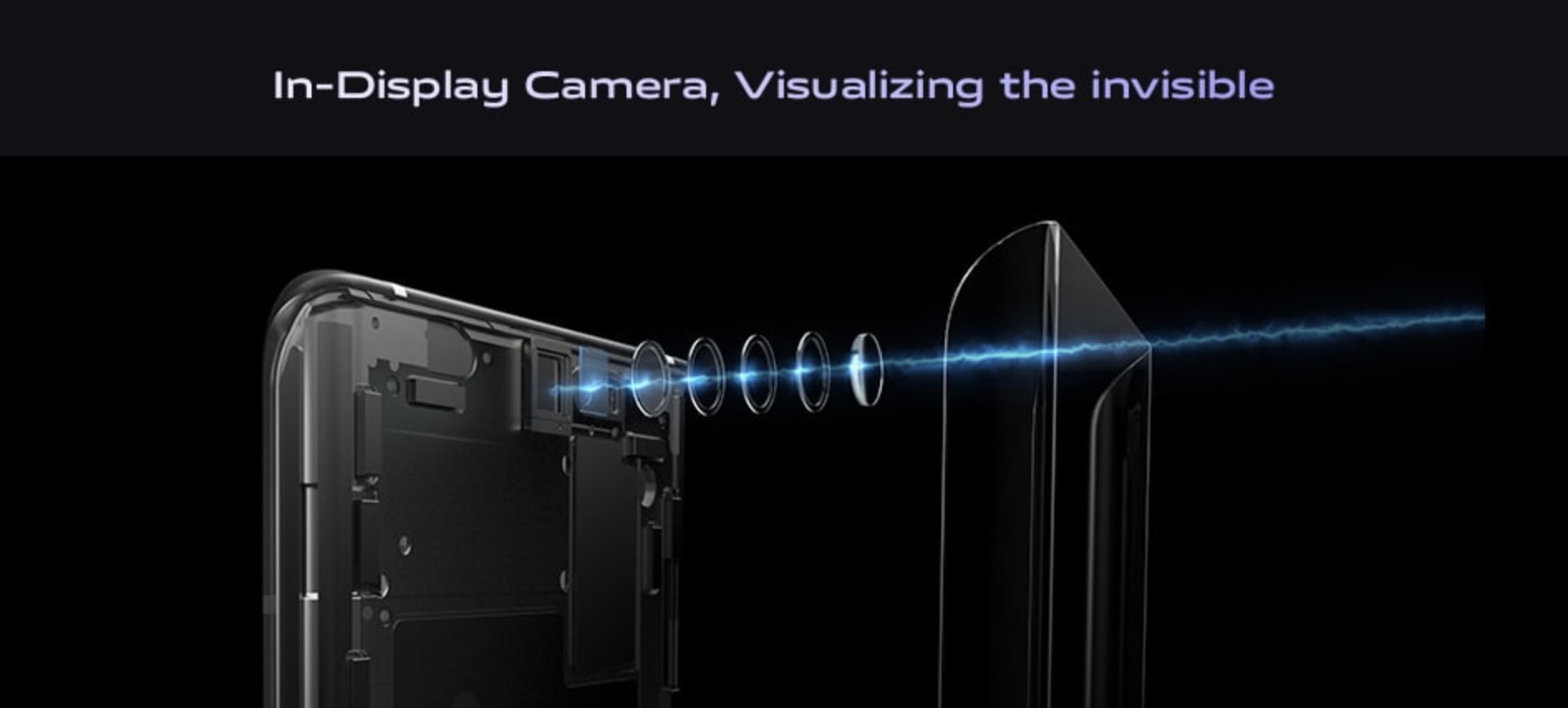Will Apple’s iPhone Feature a Futuristic Under-Display Camera?
 Credit: Vivo
Credit: Vivo
Toggle Dark Mode
When it first launched, the notch was controversial. A few years later, most people have learned to live with it. But despite that, Apple is still looking to get rid of it.
As far as how, that’s still up for debate. Various Android manufacturers have debuted their own solutions, from pop-up camera modules to small display pinholes.
But one there’s one particular design option that’s particularly interesting: embedding the camera underneath the display.
Under-Display Camera Technology
At least two Android manufacturers have debuted prototype devices that feature front-facing cameras embedded underneath the display.
Last summer, Oppo unveiled its first proof-of-concept device, which featured a display-embedded camera. But it wasn’t actually a device consumers could buy, and there hasn’t been much word about Oppo’s take since then.
That seems to be largely because Oppo later basically admitted that embedding a camera underneath a display compromises the image quality. In a tweet after MWC19, the Android maker noted that its concept images included corrections for haze, dynamic range and white balance.
Now, CNET reports that Vivo has announced a new device with pretty much the same idea. The smartphone, the Apex 2020, features a 16-megapixel camera underneath the display.
Of course, the same problems start to crop up.
The Apex 2020 isn’t a consumer-facing production device — it’s a prototype. And, in fact, the “under-screen technology” used by Vivo is essentially the same as Oppo’s. (Both are owned by the same parent company, it’s worth noting.)
In other words, Android makers are looking to get rid of the notch in a novel way. But it’s likely to be years before they can actually do it by embedding a camera underneath the display.
Could Apple Do It?
A display-embedded camera does seem fairly Apple-esque. It results in a visually clean smartphone without any excess design details. But given that Apple places a premium on camera quality, it seems like Oppo’s and Vivo’s take isn’t realistic.
Other potential solutions seem just as unlikely. Given how secure Face ID is compared to Touch ID, Apple probably isn’t going to reverse course and ditch its facial recognition system.
Because of that, it’s likely that any notch-less iPhones to come won’t have Face ID. That could mean that they will be lower-end devices that retain fingerprint authentication (or a maybe higher-end device with an under-display Touch ID sensor).
That brings the discussion back to under-display cameras. And, in fact, Apple suppliers have even debuted under-display light and proximity sensors. Those would be essential to an iPhone with under-display Face ID and front-facing camera modules.
There are still some major hurdles Apple will need to overcome before an iPhone with a display embedded fingerprint reader and front-facing camera module comes to fruition.
But, with rumors and predictions suggesting that notch-less iPhones will be the norm over the next few years, it seems likely that Apple is exploring all of the possibilities.







